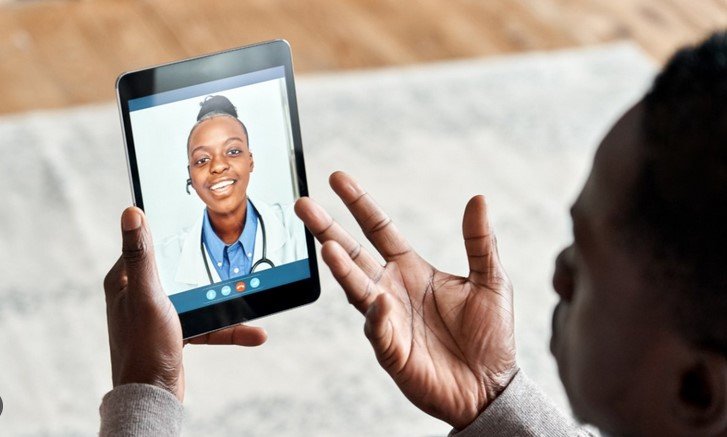Telemedicine has revolutionized the way healthcare is delivered in today’s fast-paced, technology-driven world. As healthcare professionals and patients alike embrace virtual consultations, the impact of telemedicine has reshaped the accessibility, efficiency, and overall experience of medical care. With the advancement of digital tools and mobile health platforms, telemedicine continues to play a crucial role in modern healthcare.

Improving Access to Healthcare
Telemedicine has significantly improved access to healthcare, especially for patients in remote or underserved areas. People living in rural communities often struggle to access specialized care due to distance and limited local resources. Telemedicine allows these individuals to connect with doctors and specialists without traveling long distances, making healthcare more accessible than ever before.
In addition to rural communities, telemedicine provides essential services to individuals with mobility issues or chronic conditions. Patients who find it challenging to visit clinics in person can now consult with healthcare providers from the comfort of their homes. This convenience not only improves access but also reduces the risk of exposure to contagious diseases in waiting rooms.
Enhancing Efficiency and Reducing Costs
One of telemedicine’s greatest benefits is its ability to enhance the efficiency of healthcare delivery. Virtual consultations eliminate the need for travel, reduce wait times, and allow doctors to manage their schedules more effectively. By offering remote appointments, healthcare providers can optimize their time and see more patients in a day, leading to better use of resources.
In terms of cost, telemedicine has proven to reduce healthcare expenses for both patients and providers. Patients save on transportation, accommodation, and time away from work. Meanwhile, healthcare facilities can lower operational costs by reducing the need for physical space and minimizing administrative overhead.
Telemedicine also plays a key role in managing chronic diseases. By enabling regular monitoring and follow-up appointments through virtual visits, healthcare providers can catch potential issues early, preventing costly hospital admissions or emergency interventions.
Promoting Continuity of Care
Telemedicine ensures continuity of care, a critical factor in managing long-term health conditions. Patients with chronic illnesses, such as diabetes or heart disease, often require ongoing monitoring and frequent follow-ups. Telemedicine allows for more consistent communication between patients and healthcare providers, which leads to better health outcomes.
For example, remote patient monitoring tools, such as wearable devices or mobile apps, enable healthcare providers to track vital signs, medication adherence, and lifestyle changes in real-time. Doctors can intervene immediately if they detect any abnormalities, ensuring timely and effective care.
Expanding Access to Specialists
In traditional healthcare settings, accessing specialists often requires long wait times and multiple referrals. Telemedicine eliminates these barriers by connecting patients with specialists regardless of geographic location. Whether it’s consulting with a neurologist, cardiologist, or mental health professional, telemedicine makes it easier for patients to receive specialized care faster.
Moreover, telemedicine facilitates second opinions from experts around the world. Patients seeking advice on complex medical conditions or treatment plans can now consult with renowned specialists without the constraints of distance or time zones.
Improving Patient Engagement and Education
Virtual healthcare has empowered patients to take a more active role in managing their health. With mobile health apps, patients can track their progress, monitor symptoms, and communicate regularly with healthcare providers. This level of engagement leads to more informed patients who understand their conditions better and are more likely to adhere to treatment plans.
Additionally, telemedicine platforms often include educational resources that patients can access at any time. These resources offer valuable information on managing health conditions, medication usage, and preventative care, promoting health literacy and fostering better patient outcomes.
Adapting to Public Health Crises
The COVID-19 pandemic highlighted the importance of telemedicine in responding to public health crises. During lockdowns and social distancing measures, telemedicine became a lifeline for patients needing non-emergency medical care. It enabled healthcare systems to continue providing essential services while minimizing the spread of the virus.
Telemedicine’s role in modern healthcare has now extended beyond pandemic response, becoming an integral part of everyday medical practice. Its ability to adapt to various public health challenges makes it a valuable tool for future healthcare delivery models.
Conclusion: Telemedicine’s Lasting Impact on Healthcare
Telemedicine has forever changed how we approach healthcare. It enhances access to care, reduces costs, promotes continuity of care, and connects patients with specialists, all while encouraging better patient engagement. As technology continues to advance, telemedicine will undoubtedly play an even more significant role in improving healthcare delivery and patient outcomes in the years to come.




